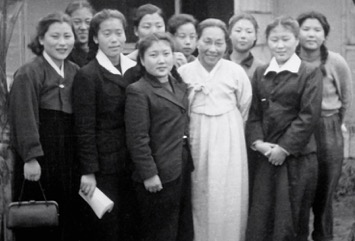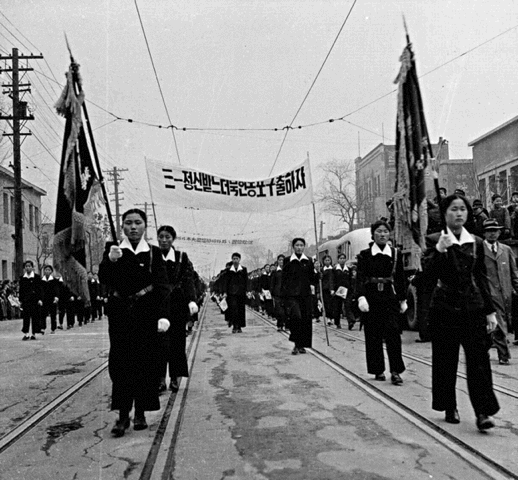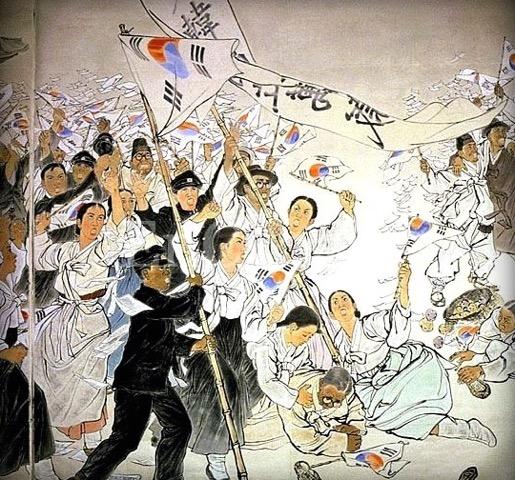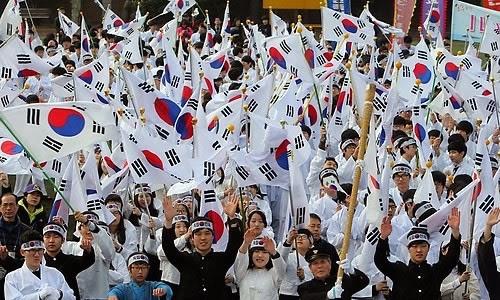The March First Movement and a Tiger Grandmother’s Legacy

I never met Shin Ae-gyun. But I wish I had. To spend just one day with her asking questions about her life and son, Dr. Hyun Bong-hak, the man who helped save 100,000 North Korean refugees at Hungnam, would have been wonderful. I know her only through family accounts, letters, pictures, and her autobiography, “Tiger Grandmother.”
Stubborn, independent, and determined, Shin Ae-gyun, a 19-year-old Korean woman, took to the streets. She was angry. Like millions of Koreans across the peninsula, she wanted her country to be free. More specifically, she wanted the Japanese out of Korea. What she would soon learn, however, was that the Japanese had no intention of leaving and were about to make the protesters pay a high price. Over the following weeks, thousands of Koreans would die.
But Ae-gyun, opinionated and patriotic, was willing to take her chances. She had always been somewhat of a rebel, and even as a young girl had fought against the established norms of the day. As an adolescent, she had attended and, more impressively, graduated from high school, a rare feat for a Korean woman in the early 1900’s. When her father, a silk worm farmer from a fishing village an hour north of Hungnam (today in North Korea), heard about her plans to enroll in school, he simply said, “No!” followed by an abrupt and agitated, “It’s not proper.” But Ae-gyun stood her ground, as she would throughout her long life (she lived to be 87).
On March 1, 1919, Ae-gyun joined hundreds of thousands of Koreans in the 20th century’s first non-violent independence movement, the now famous and celebrated March First Movement. Inspired by US President Woodrow Wilson’s “Fourteen Points,” specifically his call for world peace and freedom for colonized countries, Korean Christian and civic organizations had, months earlier, begun planning a nation-wide independence movement. By March 1 everything was in place.
Gathered at Seoul’s Pagoda Park, the movement’s leaders read a “declaration of independence,” boldly proclaiming:
We hereby declare that Korea is an independent state and that Koreans are a self‑governing people. We proclaim it to the nations of the world in affirmation of the principle of the equality of all nations, and we proclaim it to our posterity, preserving in perpetuity the right of national survival. We make this declaration on the strength of five thousand years of history as an expression of the devotion and loyalty of twenty million people.
Conscience is on our side, and truth guides our way . . . The spirits of thousands of generations of our ancestors protect us; the rising tide of world consciousness shall assist us. Once started, we shall surely succeed. With this hope we march forward.

Girls parade through Seoul in a March First Movement commemoration in 1954, a year after the Korean War’s end. (public domain photo)
Marching arm in arm with her friends that day, Ae-gyun chanted the phrase that would soon echo through towns and villages across Korea, “Mansei, Mansei!" (Long live Korean independence!). But her excitement and euphoria quickly ended. The Japanese immediately began rounding up, beating, and imprisoning hundreds of Koreans. Chaos and violence erupted.
Ae-gyun and her friends were arrested and thrown into a Japanese jail. They spent the next three days together in a cramped cell eating rice, drinking water, quietly talking, and trying to sleep. It was the worst experience of Ae-gyun’s young life. When the young women were finally released, they were more determined than ever to defy the Japanese.
During the ensuing weeks, Japanese soldiers and police attacked Korean neighborhoods, schools, and churches. Atrocities occurred, and thousands of Koreans died (the exact number of which will never be known, but most historians estimate that between 2,000 and 7,000 perished). In a remarkable testament of self-control, the Koreans never retaliated. No Japanese were killed. It would take another 26 years of suffering and oppression for the people of Korea to achieve their freedom.
On August 15, 1945, the day the Japanese surrendered, Ae-gyun celebrated Korea’s liberation. Colonial rule was over, and her dream - and the dream of all Koreans - had been realized. They were free. The seed of independence, planted by those who had marched and died in 1919, had finally blossomed.
Today, March 1, 2018, Koreans enjoyed Samiljeol (삼일절), a national holiday honoring the brave men and women who shouted "Mansei! Mansei!” 99 years ago. Shin Ae-gyun would be proud. As a woman who stood up for her beliefs, regardless of the consequences, she represented the best of her generation. During her extraordinary life she would raise six children, become a respected community leader, establish a girls’ school on Geoje Island, and serve as a member of Ewha Woman's University Board of Directors. Her strong Christian faith, perseverance, and determination to help others became the hallmarks of a life filled with stewardship and service. She left a lasting legacy of sacrifice and goodwill to her children and her country. Mansei! Mansei!
Author's note: Ae-gyun played a key role in the life of her son, Hyun Bong-hak, molding him into a person who, like her, was a true humanitarian, patriot, and leader. I can’t help but think that his mother’s voice was guiding him as he worked to save thousands of refugees on the cold beaches of Hungnam in December 1950. It’s an honor to tell her story, and I’m grateful to her granddaughters, Esther and Helen, for sharing their memories and pictures of their beloved “halmoni.”
Top/feature photo: Shin Ae-gyun, center in a white, with students from her school in Geoje, circa 1951. The woman on the far left (holding the purse) is her daughter, Soon Hyun-oh, who helped her mother at the school. (Photo courtesy of Esther Hyun)


I also am very impressed with her remarks. As a president of Korea Heritage Society, I like to share with her experiences.
Thank you for your kind words, Mr. Choi. I’m so glad you enjoyed the story.
I look forward to working with you and the team at the Korea Heritage Society.
One of the pictures, the one of 1954 parade, I was one of the students marching in Seoul.
The students’ uniform tells me it is our school uniform, Kyung GI girls’ high school.
I graduated from that high school in 1956 and entered Seoul National University.
We are the generation of experiencing Japanese occupation period, independence in 1945 , and the Korean War.
I followed all the Korean Heritage pictures on this face book and very impressed with the old ones.
Thanks fir collecting all those old records and educate our the younger generation.
I appreciate this greatly.
Thanks so much for your thoughtful response, Ms. Kim. What an amazing experience it must have been to march in that parade and be a young person during that time. You’ve seen it all!
I’d love to have a coffee with you one day and interview you about your experiences. If this interests you, please email me at ned@nedforney.com.
Again, we appreciate your commenting.
Wow! What a tumultuous time! I hope you’ve already (or will be able to) documented your life experiences via videotaped interviews and written format for your family, friends, and future generations. While my father was able to prevail, my mom’s life experiences were profound and devastating – from being born during the Japanese occupation, losing close family members at a young age, and surviving the Korean War. It was too painful for her to talk about. I never knew that she had a younger sister. It wasn’t until a few years after my mom passed away that I found out that I had an aunt who had perished as a little girl along with her grandmother during the bombings in Pyongyang. The incident was recorded in my father’s autobiography, but hidden until decades later when we received a working draft translation of his autobiography in English.